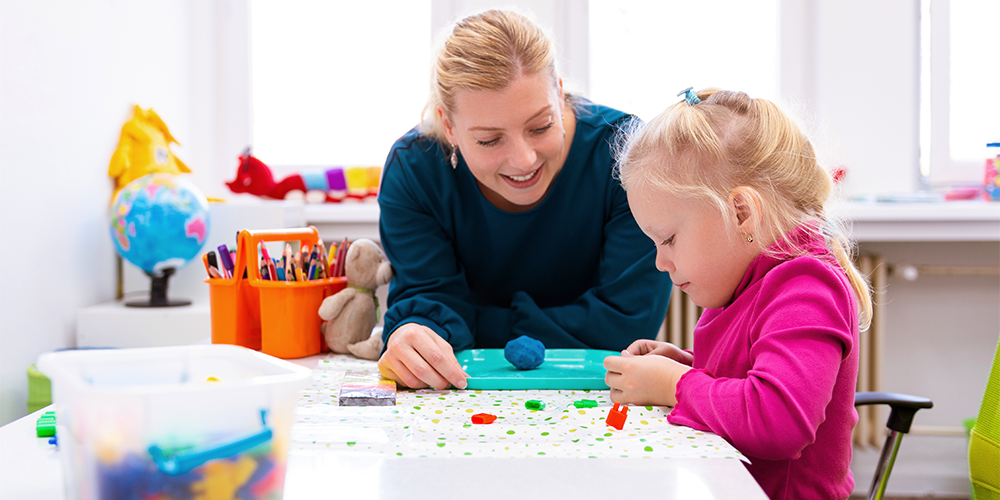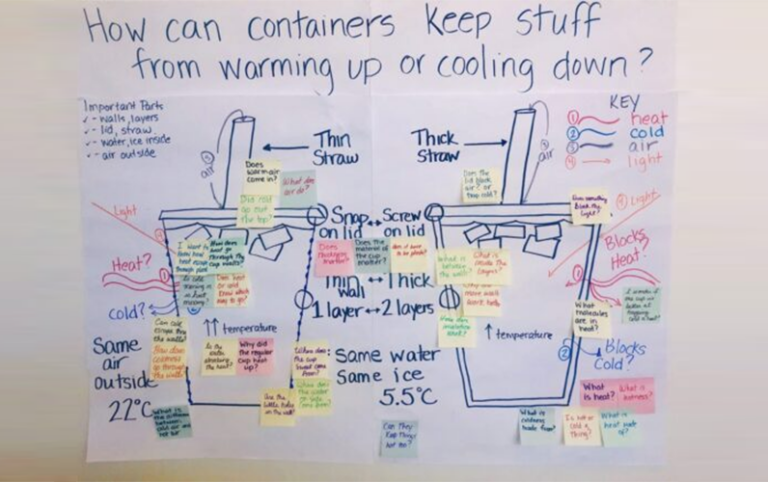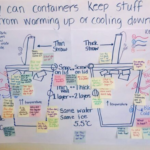Picture this: a student struggling to keep up in class, not because they aren’t bright, but because focusing on handwriting is causing frustration. Or maybe another student has difficulty participating in recess due to sensory sensitivities. This is where occupational therapists step in! Plus…
April happens to be Occupational Therapy Month!

Occupational therapists (OTs) are essential in bridging the gap between a child’s needs and their ability to thrive in the learning environment. I chatted with my friend Amy Fairweather, an OT of 23 years, to shed light on the amazing ways OTs empower students to reach their full potential.
| Betsy Butler: Amy, thanks for taking the time to share your story! How did you decide you wanted to be an occupational therapist? |
Amy Fairweather: I remember watching a therapist work with my baby cousin who had Down’s Syndrome in his home and thought, “I want to do that someday,” even though. I really did not know what “that” was at the time. Then, I worked at an afterschool program and quickly realized that I loved working with kids who needed a little extra help accessing the environment. I became a one-to-one support recreation leader and a paraprofessional in the school setting. I’ve worked closely with some talented occupational therapists (OT) who inspired me to become the OT I am today.
I’m currently serving as an early interventionist/OT on our birth – 3yo team. We support our babies, toddlers, and their parents in their home setting, focusing on all areas of development. I now have my dream job! I absolutely love going to work each and every day.
| Betsy: What schooling and training does it take to become an occupational therapist? What degrees do you hold? |
Amy: Currently, you need to hold a Masters degree and be licensed through the state you work in and be certified through the National Board for Certification in Occupational Therapy (NBCOT). I worked as a certified occupational therapy assistant (COTA) for about 12 years while continuing my education. Then I earned my BA in human services, and my Masters degree in Occupational Therapy and certification, and I’m licensed through the state of MN.
| Betsy: Can you share some specific examples of what OTs do to help students function better in the classroom? You’ve worked with a few age groups, too, right? |
Amy: Yep! In our district, I have worked with age groups from birth – 8th grade.
An OT’s role is to support a student and their educational team, once they have been identified as a student who qualifies and has an educational need for special education support. OTs are considered “related service providers” in an educational setting, and they collaborate with a student’s special education team, and the general education teachers. This collaboration provides support through accommodations, adaptations, modifications, etc. for the student to meet their IEP goals. We observe the student as they encounter difficulty with a task or directive, then complete what is called a “task analysis,” which breaks down the task and evaluating which strategies might work best.
Services can be indirect, working behind the scenes supporting the team, or direct, face-to-face services working with the student in a small group or classroom setting.
For example, if a 4th grader demonstrates difficulty in keeping up with the pace of physical writing in class, we can look at strategies such as typing, voice typing, word prediction, or even a scribe for longer assignments. Another example might be a student who is unable to sit still and focus on tabletop tasks. An OT may work with the student and the educational team to try strategies like movement breaks, a sit-and-move cushion, and/or a standing desk.
We also work to educate educators, families, and others about the impact of a disability on educational performance, the benefits of adaptations/accommodations, and when and how support from a related service professional is needed.
| Betsy: What kinds of misperceptions or myths have you heard about OTs? |
Amy: One misperception I’ve experienced is that “OTs teach kids to write.” That’s a very broad statement! With writing, we understand all of the complicated motor systems, gross motor (positioning), fine, visual, and sensory motor skills needed in prewriting and writing skills.
| Betsy: What’s the best part of your job? |
Amy: Every day is different! I love the creativity and collaboration with students and their families, teachers, and other staff on the team.
Amy’s story offers a powerful glimpse into the transformative work of occupational therapists. Their dedication is key in unlocking a child’s potential, fostering independence, and creating learning environments where every student can succeed.
About the Author

Betsy Butler (she/her) is a Professional Learning Specialist at Teaching Channel. She holds a B.A. in English, a Master’s in Education, and has been teaching since 1992. Betsy uses her three decades of teaching experience to write and revise our courses while selecting the perfect accompanying texts. Her specialty areas include ELA, special education topics, behavior management, and mental health.
Fun Fact: Betsy’s daily conquest is solving the New York Times crossword puzzle!






